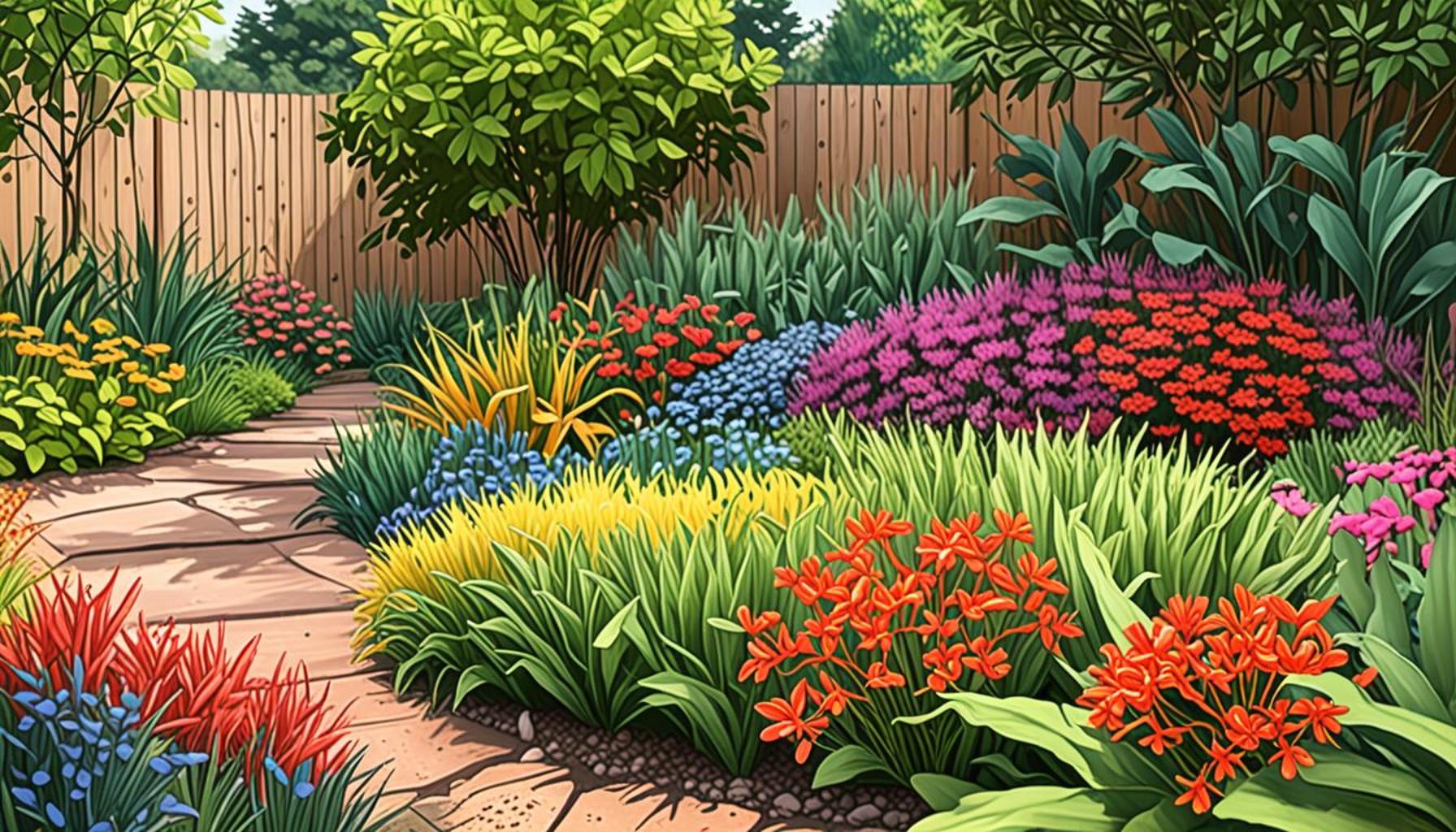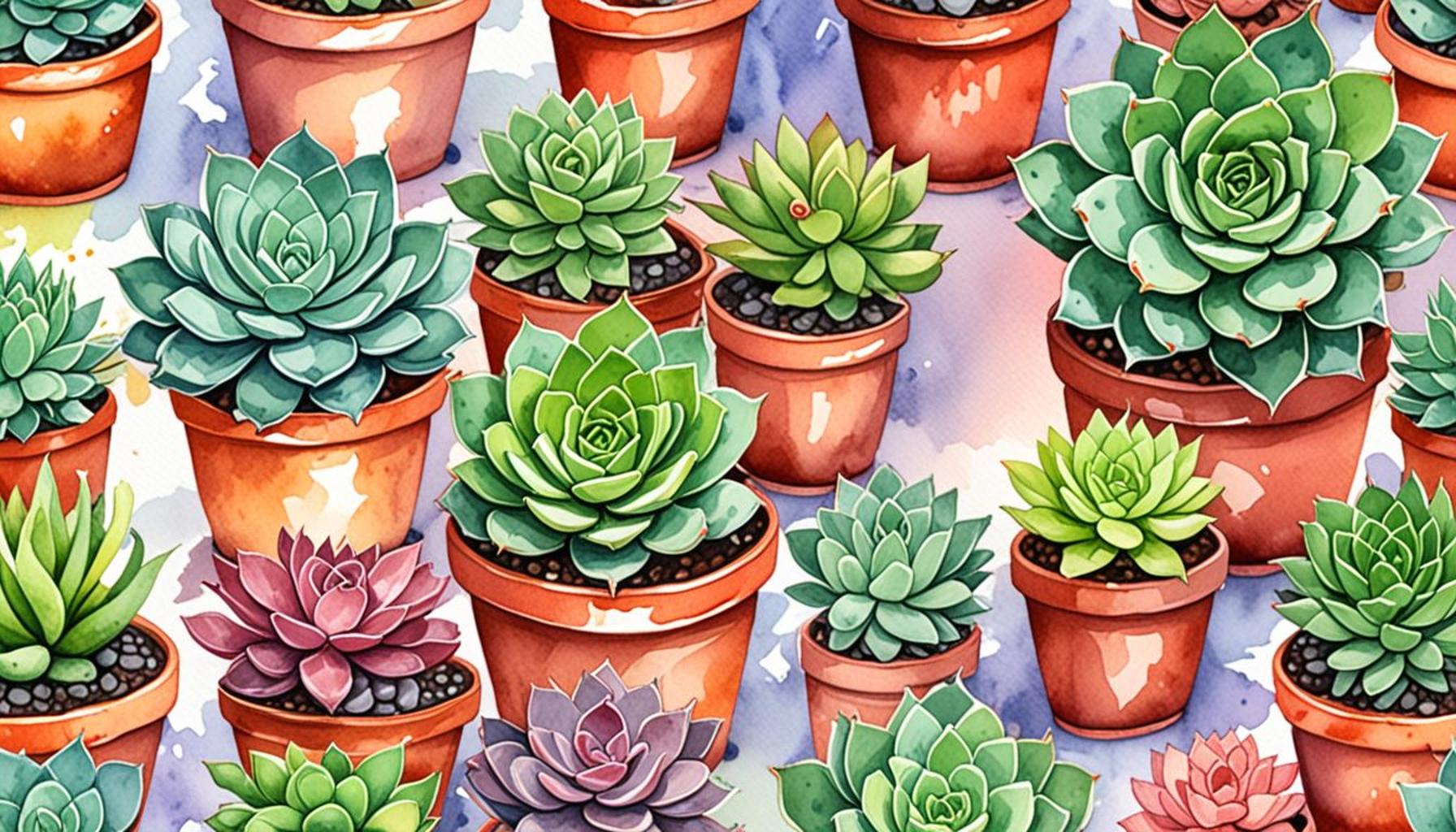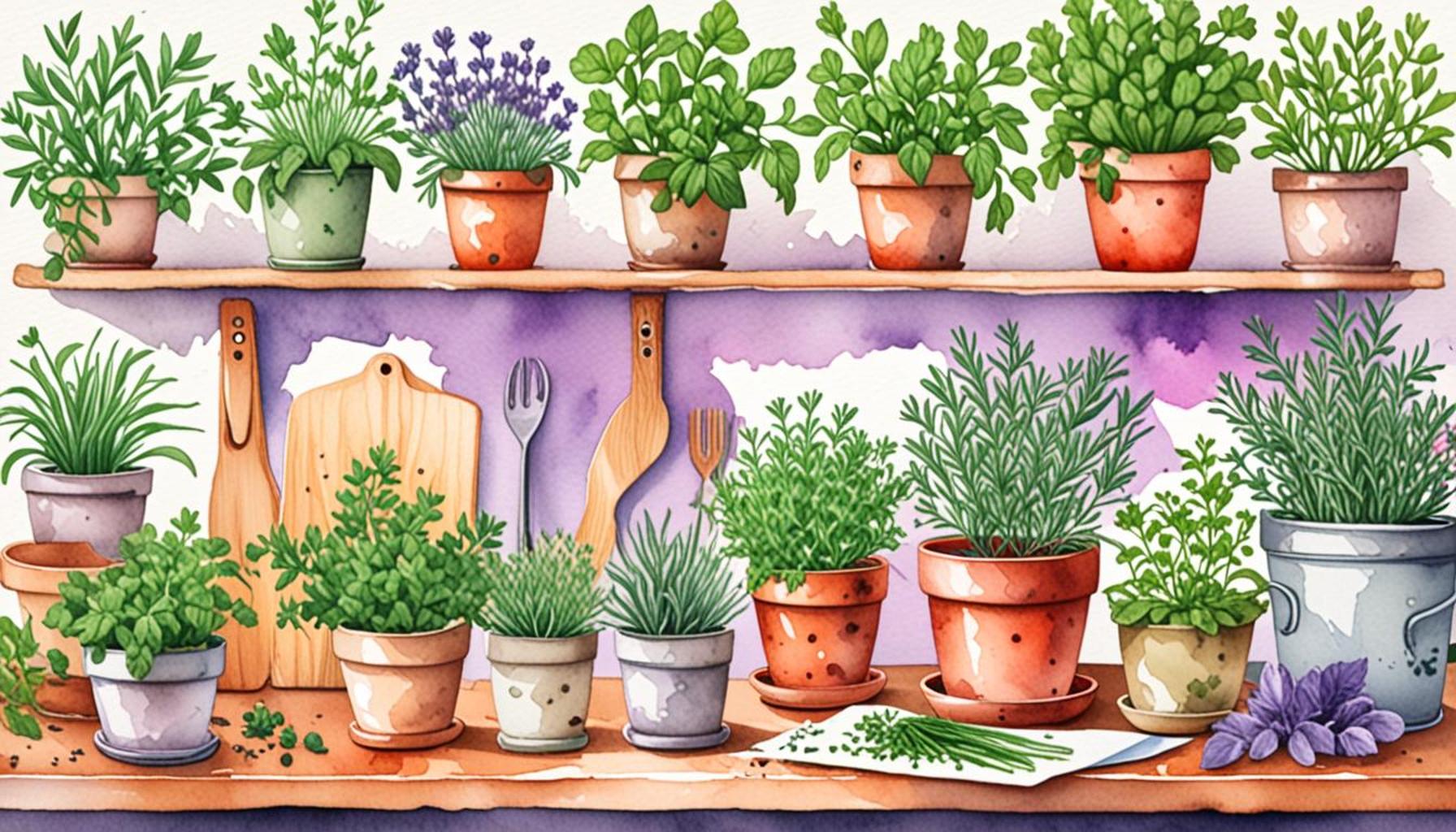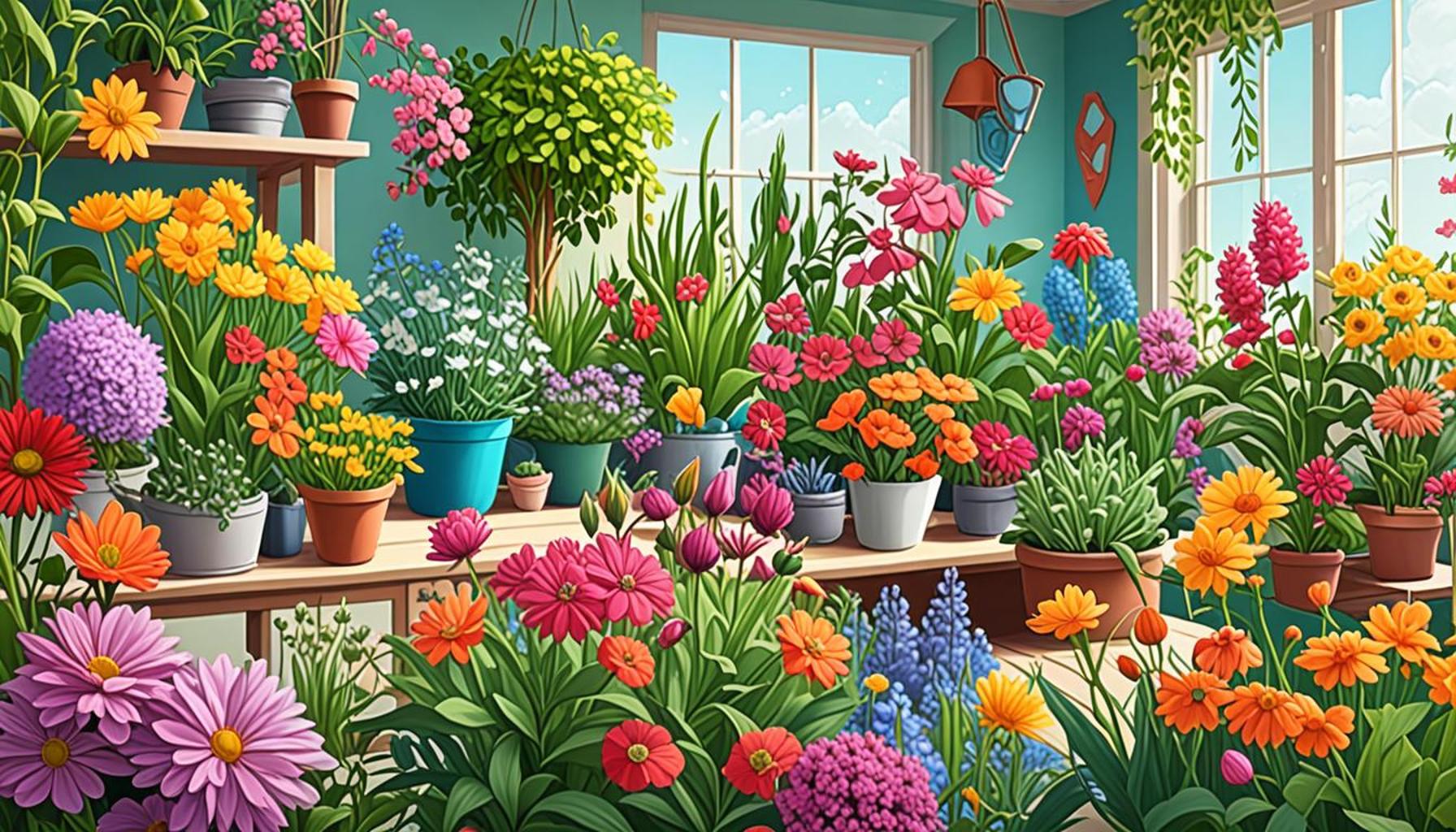Native plants: the ideal choice for a sustainable and low-maintenance garden

Discover the Benefits of Native Plants
Creating a garden that is both sustainable and low-maintenance is a dream for many homeowners in the United States. One effective method to achieve this is by incorporating native plants into your landscape. These plants, which are adapted to local climates and ecosystems, offer numerous benefits that extend far beyond mere aesthetics.
Why Choose Native Plants?
- Water Efficiency: Native plants thrive in the existing rainfall patterns of their regions, which significantly reduces the need for supplemental watering. For instance, the Echinacea purpurea (Purple Coneflower) not only withstands dry periods but also helps retain soil moisture, making it an excellent choice for environmentally conscious gardeners.
- Biodiversity Boost: By selecting native flora, gardeners create a welcoming habitat for local wildlife. This is particularly important for pollinators like bees, butterflies, and hummingbirds, which rely on native plants for food. For example, the Asclepias tuberosa (Butterfly Weed) attracts monarch butterflies, helping sustain their populations and promoting ecosystem balance.
- Lower Maintenance: Once established, native plants generally require less care compared to non-native varieties. This means less frequent pruning, watering, and pest control. Plants like the Rudbeckia hirta (Black-eyed Susan) not only bloom brilliantly but also resist common pests and diseases, allowing you to spend more time enjoying your garden rather than maintaining it.
In addition to these benefits, native plants contribute significantly to soil health. Their deep root systems help prevent erosion and promote greater soil structure and nutrient availability. By choosing local flora, gardeners engage with a legacy of resilience and adaptation, forming a vital connection to their surroundings.
Local Examples to Consider
- Echinacea purpurea (Purple Coneflower): A hardy perennial that attracts pollinators and thrives in a variety of soil types.
- Asclepias tuberosa (Butterfly Weed): Known for its stunning orange flowers, it serves as a critical host plant for monarch caterpillars.
- Rudbeckia hirta (Black-eyed Susan): With sunny yellow petals and a dark center, this flower brightens up any garden while attracting various beneficial insects.
As you explore the world of native planting, consider the positive impact it can have on your garden and the environment. Not only can adopting this approach transform your outdoor space, but it can also foster a deeper connection to your local ecosystem. By leaning into the rich diversity of plants native to your area, you actively participate in conservation efforts and encourage a healthier habitat for both wildlife and future generations.
DISCOVER MORE: Click here for tips on choosing plants for small spaces
The Ecological Advantages of Native Plants
When designing a garden that is both sustainable and low-maintenance, native plants stand out as the ideal choice. They are not only visually appealing but also offer significant ecological benefits that contribute to a healthier environment. By embracing these native species, gardeners can create gardens that serve as functional ecosystems, promoting biodiversity and conserving resources.
Adaptation to Local Conditions
One of the most compelling reasons to choose native plants is their remarkable adaptation to local conditions. Unlike non-native species, which may struggle to survive in unfamiliar environments, native plants thrive in the specific climates, soil types, and precipitation patterns of their regions. For instance, the Amsonia tabernaemontana (Blue Star) is well-suited for many areas in North America, known for its resilience and vibrant blue flowers that bloom in spring. This adaptation not only ensures healthy growth but also means that native plants require minimal care throughout their life cycle.
Promoting Healthy Ecosystems
Integrating native plants into your garden plays an essential role in promoting healthy ecosystems. They create habitats that support various local wildlife, including birds, bees, and other pollinators vital for maintaining ecological balance. For example, the Rudbeckia fulgida (Orange Coneflower) not only attracts bees and butterflies but also provides seeds for birds, enhancing the food web in your garden.
Moreover, using native plants assists in pest control by fostering beneficial insects that naturally manage pests without the need for chemical interventions. Selecting plants such as the Monarda didyma (Bee Balm) can attract predatory insects that target harmful pests, thereby maintaining a healthy garden ecosystem with reduced reliance on synthetic pesticides.
Soil Health and Erosion Control
Native plants contribute significantly to soil health and erosion control as well. Their robust root systems, adapted to local environments, help anchor the soil and prevent erosion, particularly in areas prone to heavy rainfall. Plants like Carex pensylvanica (Pennsylvania Sedge) not only stabilize the soil but also improve its structure and nutrient content, promoting a rich environment for all garden inhabitants. This symbiotic relationship between plants and soil fosters a self-sustaining ecosystem, reducing the need for fertilizers and other interventions.
Building a Sustainable Future
Choosing native plants is more than just an aesthetic choice; it is a commitment to sustainability and environmental stewardship. As homeowners increasingly seek to reduce their carbon footprint, embracing local flora creates an opportunity to promote horticultural practices that benefit both personal spaces and the larger landscape. The ripple effects of these gardens can lead to healthier communities, enhanced wildlife habitats, and a more resilient environment.
As you embark on your journey toward a sustainable and low-maintenance garden, consider exploring a variety of native species that reflect the beauty and diversity of your local area. Making informed selections can transform your garden into a thriving sanctuary for both people and wildlife, proving that a flourishing outdoor space can indeed be achieved with minimal effort.
| Advantage | Description |
|---|---|
| Biodiversity | Native plants support local wildlife, providing food and habitat for various species, which enriches ecosystem diversity. |
| Water Efficiency | They require less irrigation compared to exotic species, as they are adapted to the local climate and soil conditions, resulting in savings on water bills. |
| Low Maintenance | Once established, native plants demand minimal care, reducing the need for fertilizers, pesticides, and frequent pruning. |
| Soil Health | They improve soil quality through their root systems, which enhance soil structure and facilitate nutrient cycling, promoting a healthier garden. |
Native plants not only add beauty to gardens but also foster a connection to local ecology. With the growing urgency to tackle environmental issues, incorporating these plants is a proactive step in creating a sustainable landscape. Beyond the initial appeal, the advantages they render extend to long-term ecological impacts, demonstrating their role as a pivotal choice for gardening enthusiasts who prioritize environmental health. As we delve deeper into the multifaceted benefits of native plants, the ecological significance paired with ease of maintenance becomes clear, urging gardeners to embrace them more widely.
DON’T MISS OUT: Click here to uncover essential tips
Enhancing Aesthetic Appeal and Local Identity
Beyond their ecological merits, native plants also offer a unique opportunity to celebrate regional beauty and contribute to a sense of place. When designing a sustainable garden, integrating native flora ensures that the landscape reflects the rich biodiversity and distinct character of the local environment. For instance, in the southeastern United States, the Magnolia grandiflora (Southern Magnolia) with its large, fragrant white flowers and glossy green leaves, captures the charm of the region while providing habitat and food for local wildlife.
Cultural Significance and Historical Context
Native plants are steeped in cultural significance, having served as a vital resource for Indigenous peoples long before European settlement. Many native species have historical uses, ranging from medicinal purposes to food sources. The Asclepias tuberosa (Butterfly Milkweed), for example, was traditionally used for both its aesthetic qualities and as a food source for caterpillars of the Monarch butterfly. By incorporating native plants into gardens, individuals can pay homage to the heritage and wisdom of those who originally tended these lands.
Water Conservation and Climate Resilience
Another compelling reason to choose native plants is their innate water conservation capabilities. Native species have evolved alongside regional climates, making them adept at surviving in periods of drought and heavy rainfall alike. For example, the Echinacea purpurea (Purple Coneflower) requires very little supplemental watering once established, thereby lowering your garden’s overall water demand. This capacity to thrive under various moisture conditions is particularly crucial as climate change continues to impact weather patterns across the United States.
In addition, many native plants are increasingly recognized for their role in stormwater management. Their deep roots absorb excess rainwater, reducing runoff and minimizing flooding—a vital trait for urban gardeners looking to maintain functional landscapes during heavy storms. This natural rainwater management extends the sustainable impact of native gardens beyond their borders, contributing to the health of local watersheds.
Low-Cost Maintenance and Long-Term Viability
Aside from their environmental benefits, native plants are also cost-effective in the long run due to their low-maintenance nature. Once established, they typically require fewer resources, such as fertilizers and pesticides, which translates into overall savings. As a testament to their durability, native plants are often less susceptible to diseases and pests prevalent in non-native species, allowing gardeners to enjoy a vibrant landscape with less intervention. The Rudbeckia hirta (Black-eyed Susan) is a prime example, known for its drought resistance and ability to flourish in poor soil, minimizing the gardener’s workload while adding stunning blooms.
Community Engagement and Educational Opportunities
Creating a garden filled with native plants can also serve as an educational tool and a catalyst for community engagement. Neighborhoods that embrace the use of local flora can cultivate awareness around environmental conservation and biodiversity. Schools and community groups can use native gardens as living laboratories to teach children and adults alike about local ecology, species diversity, and sustainable practices. This collaborative approach not only enriches individual gardens but also fosters a greater connection within the community, promoting stewardship of local natural resources.
DISCOVER MORE: Click here to learn about common pests
Conclusion
In summary, choosing native plants for your garden not only promotes sustainability but also enhances the connection to the local environment. These species are uniquely adapted to local conditions, making them an excellent choice for water conservation and resilience against climate fluctuations. The incorporation of native plants nurtures a landscape that celebrates regional beauty while honoring historical significance and cultural heritage.
By minimizing maintenance requirements and reducing the need for synthetic fertilizers and pesticides, native gardens offer a practical solution for those seeking a vibrant, low-maintenance outdoor space. Additionally, they create opportunities for community engagement by serving as educational resources where individuals can learn about local ecology and biodiversity.
The benefits of native plants extend far beyond individual gardens, contributing to healthier ecosystems and promoting a greater sense of environmental stewardship within communities. As we face increasing environmental challenges, embracing native flora is a proactive step toward creating gardens that are not only beautiful but also ecologically sound.
For anyone considering their gardening options, native plants emerge as an ideal choice—one that aligns aesthetics with environmental sustainability and community education. Explore the native species available in your region, and join the growing movement towards cultivating gardens that reflect and support the vibrant tapestry of local life.


